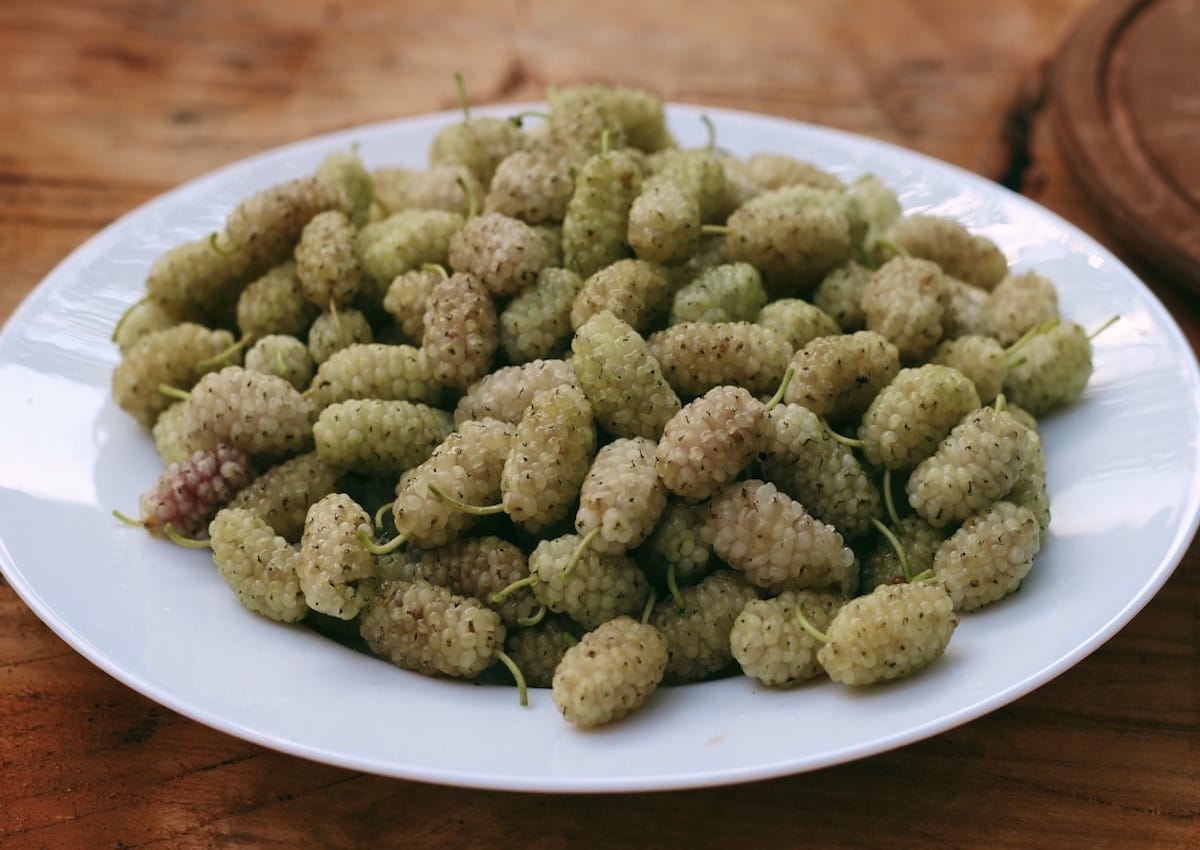Last Updated on June 16, 2025 by Aram Vardanyan
Have you ever tried mulberries in Armenia?
The delicious fruit of the mulberry tree is an Armenian favorite and this guide will discuss a little bit about their presence in Armenia, when you can enjoy them, and some dishes and desserts that you may possibly find them in!
Let us know if you have any questions about Armenian mulberries in the comments!
Mulberries in Armenia (Թութ)
Armenia’s agricultural heritage and cultural heritage are intricately entwined with the history of mulberries in that nation.
Mulberries (Morus spp.) have been grown in Armenia for many years, and both the fruit and the trees that produce it have a substantial impact on many facets of Armenian civilization.
In Armenia, mulberries have been consumed since ancient times!

The area is perfect for mulberry farming due to its hospitable environment and rich soils. Mulberry trees are grown for their leaves and fruits for both commercial and cultural purposes, as a result!
Silk manufacturing is one of the main uses of mulberries in the country. The main food source for silkworms, which create silk through their cocoons, is mulberry leaves.
Armenia has a long history of sericulture, the practice of rearing silkworms and extracting silk. To support the silk business, mulberry plantations were created to ensure a steady supply of leaves.
In Armenia, people eat mulberries as a nutritious and delicious fruit. In fact, it is one of my favorites during its season (you seriously have not lived until you have thrown mulberries into a bowl of vanilla ice cream!).

The luscious, sweet berries are tasty both fresh and cooked, and they are frequently used in jams, syrups, sweets, and dry snacks.
Mulberry trees have cultural and symbolic value in Armenia in addition to their usefulness. They are frequently connected to abundance, fertility, and good fortune.
The recognizable tree can be seen in Armenian parks, gardens, and sometimes even as physical landmarks.
I actually used to have one right outside of my Yerevan apartment and I loved it – even if stepping on the berries would turn my feet purple when wearing sandals.
When is Armenian Mulberry Season?
Armenia’s mulberry season normally lasts from May through June and falls in the late spring and early summer.
Depending on the temperature and geography of Armenia, the precise timing may change.
If you happen to visit outside of mulberry season, you can always find the fruit infused in vodka and wines… and you can almost certainly find it dried.
How are Mulberries Harvested?
You can harvest mulberries in several ways and each family may do it differently, but the only way I have personally done it has been by ‘shaking’.
This method involves shaking the mulberry tree’s branches until the fruits fall off.
We have done it in large groups and a bunch of us stand underneath the tree with a large sheet or tarp while one person climbs up a ladder and shakes the tree.

This is such a cool tradition and I think it is a blast! Just do NOT wear a white shirt if you’re harvesting black or red mulberries.
Other methods of harvesting mulberries include handpicking and shearing. Shearing tends to happen with larger-scale commercial harvests.
Armenian Foods and Desserts with Mulberries
You will find plenty of different uses for mulberries in Armenia. Here are a few generic Armenian dishes (and condiments!) that can contain mulberries:
Mulberry Jam: In Armenia, mulberry jam is a well-liked preserve. Mulberries are cooked with sugar to make a thick, sweet jam that is delicious spread on bread, pastries, or used as a garnish on yogurt or pancakes.
Gata with Mulberries: Gata is a typical Armenian pastry that frequently includes mulberries among other ingredients.
The filling is often a combination of mulberries, sugar, and occasionally spices like cinnamon or cardamom, and the dough is typically produced with flour, butter, sugar, and yeast.

With a cup of tea or coffee, gata can be offered as a sweet treat after being baked until golden.
Mulberry Compote: Mulberries are simmered with sugar, water, and other ingredients to make this straightforward and reviving dessert!
The compote is served chilled and can be eaten on its own or as a fruity addition to other desserts.
Mulberry Pilaf (Plov): Mulberries can be used in savory meals as well. In a special meal known as mulberry pilaf, cooked mulberries are combined with rice, spices, and occasionally meat or vegetables.
Rice dishes made with savory and sweet flavors are delicious and fragrant.
Tuti Oghi (Mulberry ‘Vodka’)
A popular drink made with mulberries in Armenia is tuti oghi, or mulberry ‘vodka’. While it is not actually vodka per se, it gained popularity as such during Soviet times. However, it is closer to a moonshine, chacha (Georgian), rakia (Balkans), or palinka (Hungary).
You can find tuti oghi all over Armenia, but it is especially common in Syunik and Artsakh.

Mulberry Festival in Karahunj Village (Syunik)
Each summer (usually early July), there is a mulberry festival in Syunik in a village called Karahunj.
This is not the same Karahunj as the one also called Zorats Karer. This Karahunj is right beside Goris and is a small village.
There is actually a fantastic eco-camping spot called ‘Ttenut’ there that you should check out if you’re heading in for the festival! Actually, most photos in this guide were taken there!
Do you have any questions or thoughts about mulberries in Armenia? Let us know in the comments!
